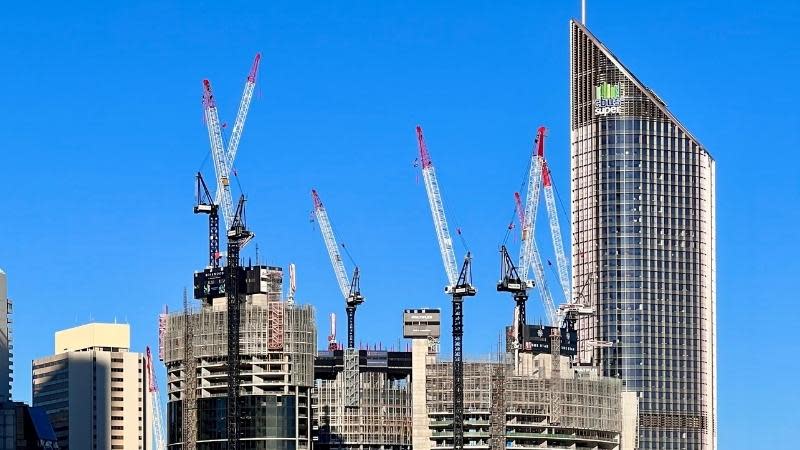Sydney Leads Way as Cranes Return to Skylines

Pandemic. What pandemic?
Cranes have returned to Australian city skylines in record numbers, with Sydney accounting for more than 40 per cent of them.
In its 21st index of construction cranes, leading global quantity surveyor Rider Levett Bucknall (RLB) said 300 cranes were added to Australia’s development sites in the third quarter of 2022, while just 245 were removed.
That additional 55 cranes brought to 868 the number of cranes in operation nationally—the biggest number since RLB began measuring data 10 years ago.
The number of non-residential cranes rose to 333, or 38 per cent of all cranes across Australia.
The Gold Coast and Sunshine Coast all recorded record crane numbers, but it was Australia’s most populous city with 380 cranes, up from 348 the previous quarter, which led the way.
The 9 per cent increase brought the Sydney figure to the highest number of cranes seen since the peak of 341 in the third quarter of 2017.
RLB’s research showed Sydney recorded significant crane number increases in the residential, civic and data centres as well as industrial sectors. Small increases were recorded in the aged care, civil, education and mixed-use sectors, while the health, hotel and retail sectors remained static.
Outside Sydney, 206 cranes were in Melbourne, 82 in Brisbane, 51 in Perth, 55 on the Gold Coast, 23 in Canberra, 17 in Adelaide, 16 on the Sunshine Coast, 15 in Wollongong, 12 in Newcastle, 10 on the Central Coast and two cranes in both Hobart and Darwin.

Rider Levett Bucknall’s Oceania director of research and development Domenic Schiafone said the strong growth in crane numbers appeared to correlate with the strong national activity numbers.
However, the so-called churn rate of cranes around Australia continued to fall to 28 per cent indicating that cranes are remaining on site longer.
“Whilst this strong number shows the continuing resilience of our industry, projects are also being delayed due to increases in inclement weather events, shortages of materials, and lack of skilled labour.”
“If cranes providing logistical assistance to multi storey developments remain on site longer than anticipated due to weather events and supply chain disruptions, the cost of preliminaries increase, causing overall costs to rise,” Schiafone said.
Strong national crane growth has been seen in almost all sectors except commercial and recreation, which both fell. The residential index rose to its highest level since the first quarter of 2019, and the non-residential index reached its highest value since the index began.














